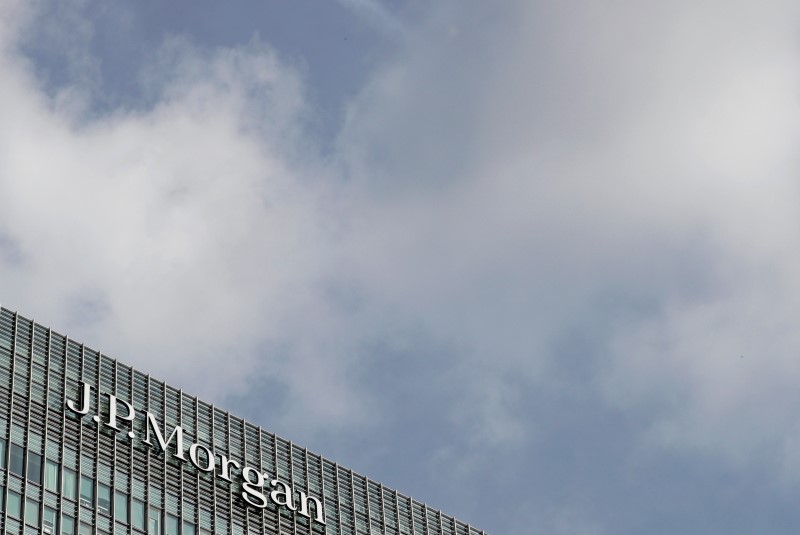 © Reuters. What will Fed do next? JPMorgan warns first rate cut may come as early as September
© Reuters. What will Fed do next? JPMorgan warns first rate cut may come as early as September
S&P 500 futures are trading modestly higher in pre-market Thursday trading, following a Fed-linked selloff on Wednesday.
The benchmark U.S. stock market index fell 0.7% yesterday while Dow Jones Industrial Average and Nasdaq Composite lost 0.8% and 0.46%, respectively, after the Federal Reserve raised rates by another 25 basis points.
Investors are still digesting the FOMC statement as the Fed took out prior language that pointed toward more hikes and said it will remain data-dependent before deciding on its next steps. The latest increase pushed the benchmark federal funds rate to a target range of 5-5.25%, the highest level since 2007.
The Fed made sure that the language did not explicitly indicate a pause in future rate hikes but linked monetary policy to future incoming data.
Still, the stock selloff didn’t occur until Fed Chairman Powell told investors that the FOMC “won’t cut rates” if inflation proves to be stubbornly high.
“We on the committee have a view that inflation is going to come down not so quickly,” Powell said during the press conference.
“It will take some time, and in that world, if that forecast is broadly right, it would not be appropriate to cut rates and we won’t cut rates.”
When will the Fed start cutting rates?
Chair Powell described the pivot as a “meaningful change” given that the FOMC was “no longer saying that we anticipate [some additional policy firming].”
The FOMC’s next meeting is scheduled for June 13-14. According to Investing.com’s Fed Rate Monitor Tool, the market is currently pricing in a 10% possibility that the Fed raises interest rates again in June.
On the other hand, the Fed futures market has also priced in more than a 70% chance of rate cuts at the September meeting. This is also the view of JPMorgan analysts, who argue that growth concerns and slowing inflation will pave the way for the Fed to start cutting rates soon.
“They won’t talk about rate cuts just yet, they can’t declare victory on inflation and they’re not going to push the market to price even more,” the analysts told Bloomberg in an interview.
They reminded investors that history suggests the gap between the last hike and the first cut is usually between six and seven months.
“We actually think it could be a bit sooner this time round simply because we’ve seen the fastest hiking cycle since the 1980s, so we see maybe a cut potentially coming as early as September.”
Wells Fargo analysts agree that the Fed will be forced to cut rates before the end of the year, although they don’t believe that will come as early as their JPMorgan colleagues suggest.
“We look for the FOMC to begin cutting rates at the end of 2023, and we forecast that the easing cycle will remain in place well into 2024,” the analysts wrote in a note.
As of Thursday morning, the rate futures market expects the Fed funds rate at 4.33% by the end of the year.
What analysts are saying about Fed
Here is what other leading Wall Street analysts have to say about the Fed and U.S. stocks.
Vital Knowledge: “Most people had been assuming the Fed would finish hiking at 5.25% or 5.5%, so the fact they decided to end at the former rather than the latter number isn’t hugely significant. That said, US monetary policy is clearly in a new era, and while it’s possible further hikes will be needed, the bar for such a move is a lot higher than before. There is still further tightening to come (including 25bp each from the ECB on 5/4 and the BOE on 5/11), but monetary policy globally is at a critical dovish inflection point.”
Goldman Sachs: “We saw the May FOMC meeting as supportive of our call for a pause in June…. Admittedly, the statement did not nod toward a June pause quite as strongly as we had expected... But putting together a statement that was acceptable to everyone when the range of views on the appropriate path forward is wide was likely difficult, and in retrospect we are not surprised that the FOMC simply chose to say less.”
Bank of America: “We think the Fed has reached its terminal rate in this tightening cycle, though we note that there are two employment reports and CPI inflation reports before the June FOMC meeting… Should regional bank stress stabilize, labor markets stay tight, and inflation stay elevated, a rate hike in June could become appropriate.”
Morgan Stanley: “With the range now at the Fed's projected peak of 5.00% to 5.25%, we expect it to remain on hold before making the first 25bp cut in March 2024. Like the Fed, we see the effects of banking stresses on the economy as highly uncertain and will hone our expectations for the economy and monetary policy as incoming data evolves.”
Barclays: “We expect the FOMC to maintain the funds rate target range at 5.00-5.25% through the rest of the year.”
SoFi: “Although this Fed statement was free from huge surprises, there was a notable shift that made many believe with more conviction we have now entered the “hold rates high” portion of the program.”

